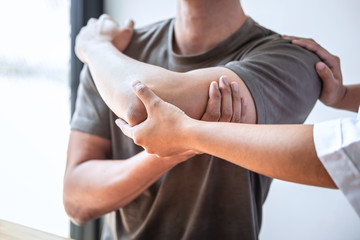
Understanding your muscles
Muscles are the unsung heroes of your body. They power every move you make, from running a marathon to simply brushing your teeth. But when they start to ache or feel tight, it can be hard to know what’s going on. Let’s take a closer look at how your muscles work, why muscle pain occurs, and what you can do to keep them healthy and pain-free.
How Your Muscles Work
Your body has over 600 muscles, and they all work together to help you move, stabilise your joints, and even maintain your posture. Here’s a quick breakdown of how they function:
- Muscle Fibres and Contraction
Muscles are made up of thousands of tiny fibres bundled together. When you want to move, your brain sends a signal through your nerves to these fibres, telling them to contract (shorten) or relax (lengthen). This contraction is what creates movement, whether it’s lifting a weight or walking up stairs. - Energy and Oxygen
Muscles need energy to work, and they get it from glucose (sugar) and oxygen. During exercise, your heart pumps more oxygen-rich blood to your muscles, and your body breaks down glucose to fuel their activity. If you push yourself too hard, your muscles might start to feel tired or sore because they’re running low on energy or oxygen. - The Role of Connective Tissue
Muscles don’t work alone—they’re supported by connective tissues like tendons (which attach muscles to bones) and fascia (a thin layer of tissue that wraps around muscles). These tissues help transmit force and keep everything in place, but they can also become tight or irritated, leading to pain.
Why Do Muscles Hurt?
Muscle pain is common, and it can happen for a variety of reasons. Here are some of the most common causes:
- Overuse or Strain
When you use a muscle too much or in a way it’s not used to, tiny tears can form in the muscle fibres. This is normal and part of how muscles grow stronger, but it can also cause soreness, especially if you’ve pushed yourself too hard. This type of pain is often called delayed onset muscle soreness (DOMS) and usually peaks 24-48 hours after exercise. - Tension and Tightness
Stress, poor posture, or repetitive movements can cause muscles to become tight and tense. Over time, this tension can lead to pain, stiffness, and even headaches (if the neck and shoulder muscles are involved). - Injuries
More serious muscle pain can come from injuries like a muscle strain or a tear. These injuries often cause sudden, sharp pain and may need medical attention. - Poor Circulation
If your muscles aren’t getting enough blood flow, they can start to ache or cramp. This can happen if you sit or stand in one position for too long, or if you have an underlying condition that affects circulation. - Inflammation
Conditions like tendinitis (inflammation of a tendon) or myositis (inflammation of muscle tissue) can cause persistent muscle pain. Inflammation is your body’s way of protecting and healing damaged tissue, but it can also lead to discomfort and stiffness.
How to Keep Your Muscles Healthy
Taking care of your muscles is key to staying active and pain-free. Here are some tips to keep them in top shape:
- Warm Up and Cool Down
Before exercise, warm up with dynamic stretches or light cardio to get blood flowing to your muscles. Afterward, cool down with static stretches to help your muscles relax and recover and minimise post-workout muscle pain. - Stay Hydrated
Muscles need water to function properly. Dehydration can lead to cramps and fatigue, so make sure you’re drinking enough fluids throughout the day. - Strengthen and Stretch
Regular strength training helps build muscle resilience, while stretching improves flexibility and reduces tension. Focus on balanced workouts that target all major muscle groups. - Listen to Your Body
If something feels off, don’t ignore it. Pushing through pain can lead to more serious injuries. Rest when you need to, and seek help if the pain doesn’t go away. - Get Enough Sleep
Sleep is when your muscles repair and rebuild. Aim for 7-9 hours of quality sleep each night to support muscle recovery.
How Physiotherapy Can Help
If you’re dealing with persistent muscle pain, a physiotherapist can help. They’ll assess your movement patterns, identify any imbalances or weaknesses, and create a personalised plan to address the issue. This might include:
- Manual therapy to release tight muscles and improve mobility.
- Strengthening exercises to build muscle resilience and prevent future injuries.
- Stretching routines to improve flexibility and reduce tension.
- Posture advice to help you move more efficiently and avoid strain.
Take Care of Your Muscles—They Work Hard for You!
Your muscles are incredible, but they need care and attention to stay healthy. By understanding how they work and why they hurt, you can take steps to prevent pain and keep your body moving smoothly.
If you’re struggling with muscle pain or tightness, don’t hesitate to reach out to Pivotal Motion Physiotherapy. Our team will be able to discuss with you in more depth on how we can help you. Book online or call us on 3352 5116.


